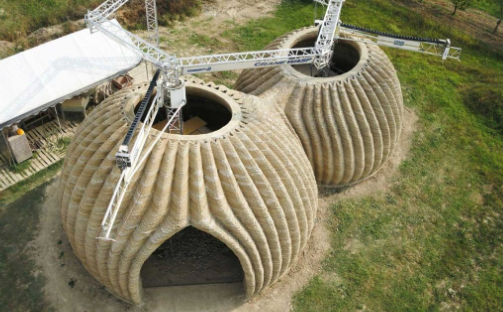Embarking on a Journey into the Architectural Landscape of 2024
The architectural industry is on a perpetual evolution, sculpted by technological strides, global regulations, and the ever-changing preferences of consumers. As we anticipate the transformative year of 2024, it is crucial to immerse ourselves in the forefront of architectural trends.

This comprehensive exploration spans from cutting-edge technologies to sustainable practices and revolutionary construction processes, providing insights into the architectural realms poised to shape the upcoming year. 1. Green Architecture- Emerging as a cornerstone trend since the early 2020s, green architecture stands as a pivotal force in 2024. This trend, fueled by a growing environmental consciousness, revolves around sustainable design practices. Prioritizing energy efficiency, resource conservation, and waste reduction, green architecture transforms traditional building designs into eco-friendly structures. Incorporating elements such as solar panels, natural sunlight, and biophilic designs, it has evolved from a niche interest to a lifestyle choice in a world grappling with climate change.

2. Smart Materials- Redefining the very fabric of building design, smart materials take center stage in 2024. From paper-thin solar cells to hydro ceramics and innovative biobased substances, these materials offer self-diagnostic capabilities, resistance to environmental hazards, and life-cycle cost efficiency. Architects leverage these materials to seamlessly blend robust yet lightweight elements, blurring the boundaries between structure and environment. The potential of smart materials remains largely untapped, hinting at a revolutionary transformation in reshaping urban skylines.

3. 3D Printed Architecture -A herald of the future, 3D printed architecture takes a leading role in shaping the architectural landscape of 2024. This avant-garde technology transcends traditional construction methods by utilizing automated processes and specialized hardware to craft intricate structures. From single-family homes to towering skyscrapers, 3D printed edifices not only enhance efficiency and reduce waste but also introduce unprecedented design possibilities. The once-futuristic concept is poised to become a commonplace method, ushering in a new era of construction for the digital age.

4. Adaptive Reuse - A fusion of architectural history and modern functionality, adaptive reuse emerges as a transformative trend in 2024. Acknowledging the imperative to use resources sparingly and develop sustainably, this trend breathes new life into old buildings. Whether transforming a dilapidated warehouse into residential lofts or repurposing a school into an office space, adaptive reuse minimizes waste and bridges the gap between the past and the future. Granting old structures a new purpose reframes the narrative, fostering a sense of continuity and sustainability.

5. New Technology - The integration of modern technology continues to revolutionize architecture in 2024, providing architects with unprecedented freedom and versatility. Virtual Reality (VR) enables the creation of interactive and lifelike virtual models, facilitating exploration of intricate designs without physical construction. Augmented Reality (AR) enhances understanding and visualization by placing designs within their real-world context. The powerful connection between architecture and reality, forged by disruptive technologies, emphasizes the need to embrace innovation in a landscape where staying ahead is paramount.

6. Tiny Houses - In a world where space is at a premium, tiny houses emerge as a stylish and efficient solution in 2024. Defying expectations, these diminutive dwellings offer a cozy aesthetic within a compact footprint. Beyond visual appeal, tiny houses provide an affordable and eco-friendly lifestyle, requiring fewer resources and less energy to operate compared to larger structures. This trend encapsulates the essence of modern living—finding satisfaction through minimalism and sustainability.

7. Modular Construction -Poised as a popular and pragmatic trend in 2024, modular construction epitomizes efficiency, cost-effectiveness, and sustainability. Prefabricated building components in a controlled factory environment and assembling them on-site minimizes construction time and waste. The versatility of modular construction extends from industrial cubes to contemporary skyscrapers, offering architects innovative design options. Beyond mitigating weather-related delays, modular construction ushers in a new era of creative possibilities, emphasizing adaptability and efficiency. As we scratch the surface of the potential unleashed by these trends, the architectural landscape is poised for a revolution. The amalgamation of innovation, sustainability, and aesthetic possibilities sets the tone for transformative architectural endeavours in 2024. Stay prepared for a year that promises to redefine the very essence of architectural design.

